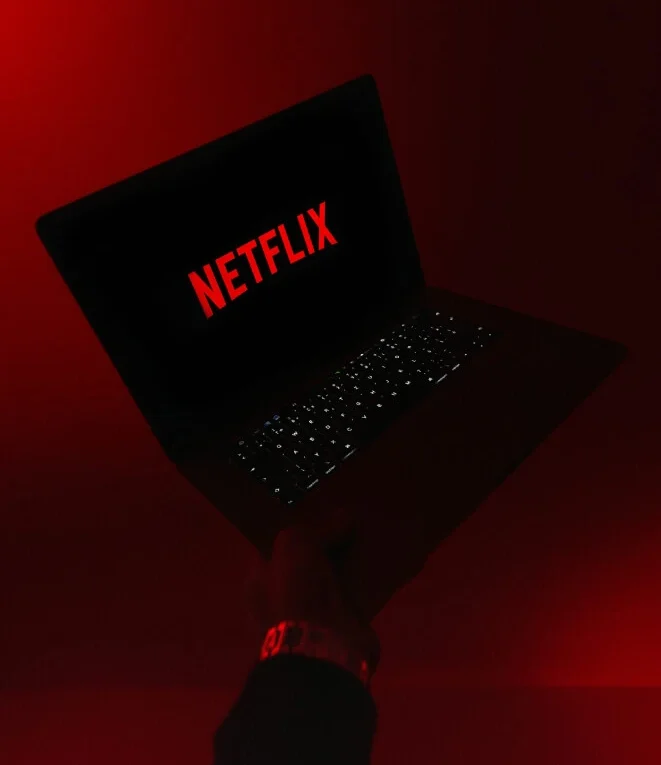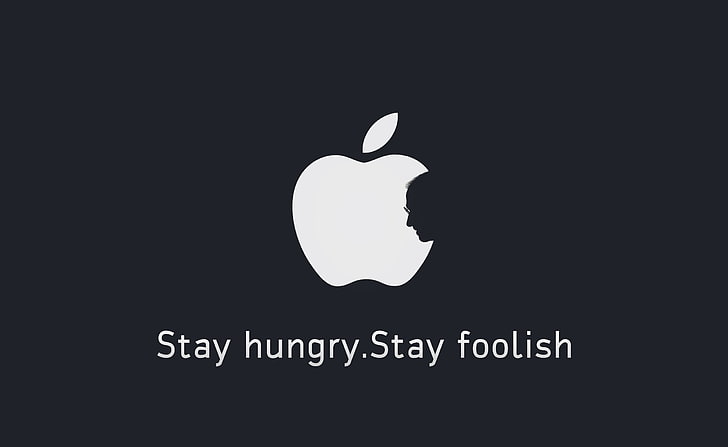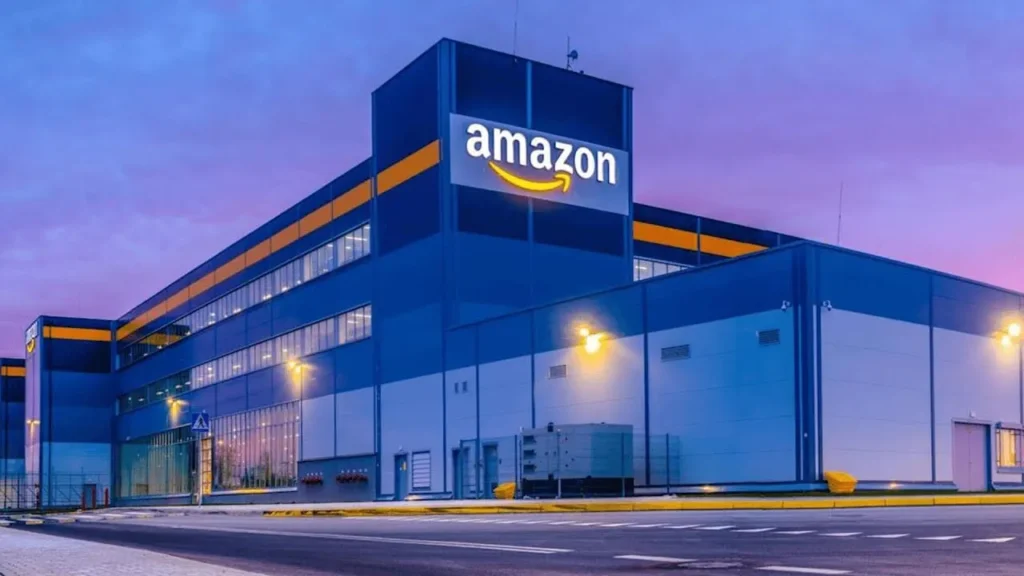In the late 1990s, the landscape of home entertainment was vastly different. Physical video rental stores like Blockbuster were household names, and the concept of streaming movies over the internet was a distant dream. Amidst this backdrop, two visionary entrepreneurs, Reed Hastings and Marc Randolph, founded Netflix in 1997. What began as a humble DVD-by-mail service transformed into a global streaming powerhouse, fundamentally changing how the world consumes media. This blog post delves deep into Netflix’s journey, exploring the strategic decisions, technological adaptations, and innovative practices that propelled it to the forefront of the entertainment industry.
Paid Subscribers
2022 Annual Revenue
Original Content Creation investment in 2022
Countries Global Reach
Total employees
Table of Contents
The Birth of Netflix: DVDs Delivered to Your Doorstep
In 1997, Reed Hastings and Marc Randolph co-founded Netflix in Scotts Valley, California. The inspiration behind Netflix reportedly stemmed from Hastings’ frustration with a $40 late fee he incurred after returning a rented VHS copy of “Apollo 13” to Blockbuster. This experience ignited the idea of a rental service without due dates or late fees, leveraging the then-emerging DVD technology, which was more compact and durable than VHS tapes.
Netflix’s initial business model was simple yet revolutionary: customers could order DVDs online and receive them by mail. This model eliminated the inconvenience of physical store visits and late fees, addressing significant pain points for consumers. The company’s website, Netflix.com, became one of the first online platforms where users could browse a vast library of titles and manage their rental queues.
Competing with Giants: The Early Challenges
Entering a market dominated by established giants like Blockbuster, which had over 9,000 stores at its peak, presented significant challenges. Netflix had to educate consumers on the convenience and reliability of online ordering and mail delivery—a novel concept at the time. Moreover, the internet infrastructure was still developing, and widespread broadband access was limited.
To overcome these hurdles, Netflix introduced a subscription model in 1999, offering unlimited DVD rentals for a flat monthly fee. This strategic move eliminated late fees and due dates, differentiating Netflix from traditional rental services. By focusing on customer convenience and leveraging the internet’s growing accessibility, Netflix began to carve out a niche in the market.

The Visionaries: Reed Hastings and Marc Randolph
Reed Hastings, with a master’s degree in computer science from Stanford University, brought technical expertise and a visionary approach to Netflix. Before Netflix, Hastings founded Pure Software, which he sold in 1997. Marc Randolph, a seasoned entrepreneur with experience in marketing and direct mail, complemented Hastings with his business acumen.
Their combined skills were instrumental in navigating the early years of Netflix. Hastings’ emphasis on innovation and Randolph’s marketing strategies allowed Netflix to stay ahead of trends and adapt quickly. They fostered a company culture that valued creativity, freedom, and responsibility, which became a cornerstone of Netflix’s success. The NetflixCulture Deck, a slideshow outlining the company’s philosophy, has been viewed millions of times online and is considered influential in Silicon Valley.
Learn About Netflix’s Company Timeline to See Key Milestones
Understanding Netflix’s evolution requires a look at its significant milestones. The Netflix Company Timeline provides a comprehensive overview of the company’s journey from its inception to its current status as a streaming giant.
- 1997: Netflix is founded as a DVD-by-mail service.
- 1999: Introduction of the monthly subscription model.
- 2000: Launch of the personalized movie recommendation system.
- 2007: Netflix introduces streaming, allowing members to watch content instantly.
- 2013: Release of “House of Cards,” marking Netflix’s entry into original content.
- 2016: Netflix becomes available worldwide, expanding to 190 countries.
- 2020: Netflix surpasses 200 million subscribers globally.
These milestones highlight Netflix’s strategic shifts and technological advancements that have shaped its success.
The Pivotal Shift: Embracing Streaming Technology
By the mid-2000s, advancements in internet speeds and video compression technology made streaming video content feasible. Recognizing this potential, Netflix began investing in a streaming platform to deliver content directly to customers’ computers and, eventually, their televisions and mobile devices.
In 2007, Netflix launched its streaming service, initially offering a limited selection of movies and TV shows. This move required significant investment and a shift away from the DVD-by-mail model that had brought them success. However, Hastings and his team understood that streaming was the future of media consumption. They anticipated the decline of physical media and positioned Netflix to lead the impending digital revolution.
Read the Harvard Business Review’s Analysis on Netflix’s International Expansion
Netflix’s expansion into international markets is a case study in strategic growth. The Harvard Business Review’s analysison how Netflix expanded to 190 countries in seven years offers insights into their approach.
Netflix adopted a phased expansion strategy, starting with Canada in 2010, followed by Latin America and the Caribbean in 2011, Europe in 2012, and eventually reaching Asia and the rest of the world by 2016. Key factors in their successful expansion included:
- Localized Content: Investing in local productions and offering subtitles and dubbing to cater to regional audiences.
- Flexible Technology: Building a scalable platform that could handle multiple languages, currencies, and payment methods.
- Data-Driven Decisions: Utilizing viewer data to tailor content offerings and marketing strategies for each market.
This strategic international growth contributed significantly to Netflix’s global subscriber base and revenue.
Data Analytics: The Secret Weapon
One of Netflix’s most significant advantages has been its use of data analytics. From the beginning, Netflix collected data on customer preferences, viewing habits, and search queries. This information was invaluable in personalizing recommendations and improving the user experience. The sophisticated recommendation algorithm became a key differentiator, helping customers discover new content tailored to their tastes.
Discover How Netflix Uses Data in Dataversity’s Article on Their Data-Driven Success
To delve deeper into Netflix’s use of data, Dataversity’s article provides an in-depth look at their data-driven strategies. Netflix leverages big data and analytics in various ways:
- Personalized Recommendations: Using algorithms to suggest content based on individual viewing history.
- Content Creation: Analyzing viewer preferences to decide on original content investments.
- User Experience Optimization: Testing different interfaces and features through A/B testing to enhance engagement.
Netflix’s ability to harness data has not only improved customer satisfaction but also informed critical business decisions, such as greenlighting new shows that have a high probability of success.
Original Content: Becoming a Content Creator
As streaming gained popularity, Netflix faced increased competition from other platforms and content providers. Licensing content was becoming more expensive and complicated as studios recognized the value of digital distribution. To secure its position, Netflix made a strategic decision to produce original content.
In 2013, they released “House of Cards”, their first original series, which was a critical and commercial success. By analyzing viewer data, Netflix knew that a political drama starring Kevin Spacey and directed by David Fincher would resonate with their audience. This data-driven approach to content creation was groundbreaking, signaling a shift in how shows were greenlit and produced.
Following “House of Cards,” Netflix continued to invest heavily in original programming, producing hits like “StrangerThings”, “The Crown”, and “Orange Is the New Black”. By 2020, Netflix had committed billions of dollars to content creation, releasing hundreds of original titles annually. This strategy not only differentiated Netflix from competitors but also gave them control over exclusive content that could attract and retain subscribers.
Global Expansion: Reaching International Audiences
Netflix’s ambition extended beyond the United States. In 2010, they began expanding into international markets, starting with Canada. Recognizing the global demand for diverse content, Netflix embarked on an aggressive international expansion plan. By 2016, Netflix was available in over 190 countries, making it a truly global platform.
This expansion required careful localization strategies, including offering content in multiple languages and creating region-specific shows. Netflix invested in international productions, bringing stories from around the world to a global audience. Shows like “Money Heist” from Spain, “Dark” from Germany, and “Sacred Games” from India became international sensations, highlighting the universal appeal of compelling storytelling.
Netflix’s international success can be attributed to its willingness to adapt to local markets. They partnered with local creators and talent, respecting cultural nuances and preferences. This approach not only expanded their subscriber base but also enriched their content library with diverse narratives.
Dive into the Netflix Culture to Understand Their Unique Corporate Philosophy
Netflix’s unique corporate culture has been a driving force behind its innovation and success. To understand this philosophy, one can dive into the Netflix Culture as outlined on their careers page.
Key aspects of Netflix’s culture include:
- Freedom and Responsibility: Empowering employees to make decisions and take ownership of their work.
- Context, Not Control: Leaders provide context for decisions rather than micromanaging tasks.
- Highly Aligned, Loosely Coupled: Teams are aligned on strategy but operate independently to foster agility.
- Candid Communication: Encouraging open, honest feedback to improve performance and collaboration.
This culture has helped Netflix attract top talent and foster an environment where innovation thrives.
Overcoming Challenges and Controversies
Netflix’s journey wasn’t without hurdles. In 2011, they faced backlash for attempting to separate their DVD and streaming services, introducing a new brand called Qwikster for the DVD business. The plan was met with customer outrage over increased prices and the inconvenience of managing two accounts. The company’s stock price plummeted, and they lost around 800,000 subscribers in a single quarter.
Recognizing the misstep, Netflix quickly reversed the decision, reuniting the services under the Netflix brand. Reed Hastings issued a public apology, admitting the company had moved too fast without considering the customer impact. This incident highlighted the importance of customer feedback and the risks of drastic strategic shifts without sufficient market research.
The company has also faced challenges related to licensing content, net neutrality debates, and competition from emerging streaming services like Disney+, Amazon Prime Video, and HBO Max. In response, Netflix has doubled down on original content and technological innovation to maintain its competitive edge.
Impact on Media Consumption and Industry Disruption
Netflix didn’t just adapt to changes in technology and consumer behavior; they were instrumental in driving those changes. The convenience of on-demand streaming led to a decline in traditional TV viewership and contributed to the cord-cutting trend. By allowing viewers to watch content anytime, anywhere, and on any device, Netflix set new standards for media consumption.
Their model disrupted the entertainment industry’s distribution channels, prompting networks and studios to reevaluate their strategies. The emphasis on binge-watching and releasing entire seasons at once changed how audiences engage with content. Traditional appointment viewing was replaced by personalized, on-demand experiences.
Netflix’s success also spurred significant investments in streaming technology and original content across the industry. Competitors raced to develop their own platforms, leading to a fragmented streaming landscape. This “streaming war” has intensified competition but also accelerated innovation and expanded content choices for consumers.
Technological Innovations: Enhancing User Experience
Netflix has consistently leveraged technology to improve the user experience. They invested in high-quality streaming technology, ensuring minimal buffering and adaptive streaming based on internet speeds. Netflix developed its own content delivery network (CDN), called Open Connect, to optimize streaming efficiency and reduce costs.
They also embraced 4K Ultra HD and High Dynamic Range (HDR) content early on, catering to viewers seeking the best possible picture quality. Netflix collaborated with device manufacturers to integrate their service directly into smart TVs, gaming consoles, and streaming devices, making access seamless.
Furthermore, Netflix’s user interface is designed for ease of use across devices. Features like “Skip Intro” and “SmartDownloads” enhance usability and personalization, keeping users engaged. The platform utilizes A/B testing extensively to refine features and layouts based on user interactions.
Company Culture: A Different Way of Working
Netflix is known for its unique corporate culture, which emphasizes freedom and responsibility. They encourage employees to take initiative, make decisions, and challenge conventional thinking. This culture is detailed in the NetflixCulture Deck, which has been viewed over 20 million times and has influenced management practices globally.
The company’s approach includes offering employees unlimited vacation time, avoiding formal performance reviews, and maintaining a high-performance environment by regularly evaluating team contributions. This culture has helped Netflix attract top talent and foster an environment where innovation thrives.
However, this culture has also been subject to scrutiny and criticism. Some argue that the high-performance environment creates pressure and job insecurity. Netflix maintains that their culture is transparent and that they prioritize honesty and direct feedback to drive success.
Philanthropy and Social Responsibility
Beyond business, Netflix and its leadership have engaged in philanthropic efforts. Reed Hastings, in particular, has been active in educational philanthropy. In 2020, Hastings and his wife, Patty Quillin, donated $120 million to support scholarships at historically black colleges and universities (HBCUs). This donation was part of a broader commitment to racial equity and social justice.
Netflix has also made efforts to improve diversity and representation in its content and within the company. They have launched initiatives like the Netflix Fund for Creative Equity, investing $100 million over five years to support underrepresented communities in the entertainment industry. Netflix publishes inclusion reports and collaborates with organizations to foster diversity.
Navigating Ethical and Social Issues
As a global platform, Netflix has had to navigate complex ethical and social issues. They have faced criticism over content that some consider controversial or inappropriate in certain cultures. Balancing creative freedom with cultural sensitivity is an ongoing challenge.
Netflix has also dealt with censorship demands from governments. In some cases, they have complied with legal requests to remove content, sparking debates over freedom of expression versus compliance with local laws. The company continues to refine its policies to address these challenges responsibly.
Future Prospects: What’s Next for Netflix?
As of 2023, Netflix continues to lead in the streaming space but faces increasing competition. The future will likely involve more original content, possibly including live sports or news, areas Netflix has traditionally avoided. They may also explore interactive content further, following experiments like “Black Mirror: Bandersnatch”, an interactive film that allowed viewers to make choices affecting the story.
Technological advancements like virtual reality (VR) and augmented reality (AR) could present new opportunities for immersive storytelling. Netflix may invest in these technologies to enhance user engagement.
Netflix is also exploring gaming, having launched mobile games available to subscribers at no extra cost. This move could signify a broader strategy to diversify entertainment offerings and tap into the lucrative gaming market.
Challenges will include managing production costs, as the investment in original content is substantial. Netflix will need to balance spending with subscriber growth and revenue. Additionally, navigating regulatory environments in different countries, especially regarding content censorship and data privacy, will be crucial.
Adapting to Changing Consumer Behaviors
Consumer behaviors continue to evolve, with younger audiences favoring short-form content and platforms like TikTokand YouTube. Netflix may need to adapt by offering a wider range of content formats or integrating social features to remain relevant.
The rise of subscription fatigue is another concern. With numerous streaming services available, consumers may be selective about subscriptions. Netflix will need to emphasize the unique value it offers to retain subscribers.
Sustainability Efforts
Environmental sustainability is becoming increasingly important. Netflix has committed to reducing its carbon footprint, aiming for net-zero greenhouse gas emissions by the end of 2022. They plan to achieve this through reducing emissions, investing in renewable energy, and supporting conservation projects.
By addressing environmental concerns, Netflix not only contributes positively to global efforts but also aligns with the values of environmentally conscious consumers.
Deep Dive: The Technology Behind Netflix
Netflix’s success is not just about content; it’s also about delivering that content seamlessly to millions of users worldwide. The company employs cutting-edge technology to ensure high-quality streaming experiences.
- Content Delivery Network (CDN): Netflix’s Open Connect is a purpose-built CDN that allows efficient content delivery by placing servers in ISP data centers worldwide.
- Microservices Architecture: Netflix was one of the pioneers in adopting a microservices architecture, which enhances scalability and reliability.
- Chaos Engineering: To ensure system resilience, Netflix developed Chaos Monkey, a tool that randomly disables production instances to test the system’s ability to withstand failures.
- Machine Learning: Beyond recommendations, Netflix uses machine learning for content localization, encoding optimization, and even to design artwork and thumbnails that attract viewers.
Marketing Strategies: Building a Global Brand
Netflix’s marketing strategies have been instrumental in building its global brand. They employ a mix of traditional and innovative marketing techniques:
- Personalized Marketing: Utilizing data analytics, Netflix personalizes not only recommendations but also marketing messages, trailers, and artwork.
- Social Media Engagement: Netflix maintains active presences on platforms like Twitter, Instagram, and Facebook, engaging audiences with memes, interactive content, and behind-the-scenes glimpses.
- Strategic Partnerships: Collaborations with device manufacturers, such as including a dedicated Netflix button on remote controls, have increased accessibility and brand visibility.
- Event Marketing: Hosting premiere events and participating in film festivals like Sundance and Cannes, elevates their content’s prestige and attracts critical acclaim.
Competitor Analysis: Navigating the Streaming Wars
The streaming landscape has become increasingly crowded. Competitors like Disney+, Apple TV+, Amazon PrimeVideo, and HBO Max are vying for market share.
- Content Libraries: Competitors are leveraging their vast libraries of popular franchises. For example, Disney+ offers exclusive access to Marvel, Star Wars, and Pixar content.
- Pricing Strategies: Some services offer lower subscription fees or bundled packages, challenging Netflix’s pricing model.
- Global Expansion: Competitors are also focusing on international markets, increasing pressure on Netflix to maintain its global dominance.
Netflix continues to innovate to stay ahead. They are exploring ad-supported tiers to offer lower-priced options and investing in niche genres to appeal to specific audience segments.
The Role of COVID-19: Accelerating Streaming Adoption
The COVID-19 pandemic significantly impacted media consumption patterns. With lockdowns and social distancing measures in place, more people turned to streaming services for entertainment.
- Subscriber Growth: Netflix saw a surge in new subscribers during the early months of the pandemic, adding 15.8 million subscribers in the first quarter of 2020.
- Content Production Challenges: The pandemic also disrupted content production, leading to delays in releases. Netflix adapted by leveraging its international productions and acquired content.
- Long-term Effects: The pandemic accelerated the shift toward streaming, but as restrictions ease, Netflix faces the challenge of retaining subscribers who may have joined during lockdowns.
Educational Content and Social Initiatives
Netflix has expanded into educational content, partnering with organizations to provide resources for learning.
- Documentaries and Series: Shows like “Our Planet” and “Explained” offer educational value.
- Collaborations with Schools: Netflix made some documentaries available for free on YouTube to support educators during remote learning periods.
- Social Issues: Netflix addresses social issues through content, such as “13th”, a documentary exploring racial inequality in the U.S. criminal justice system.
Innovation in Content Formats
Netflix is experimenting with new content formats to enhance viewer engagement.
- Interactive Content: Beyond “Bandersnatch,” Netflix released interactive shows like “You vs. Wild” with Bear Grylls, where viewers make survival decisions.
- Short-form Content: Recognizing the popularity of short videos, Netflix introduced “Fast Laughs,” a feature within the mobile app showcasing short comedic clips.
- Audio-Only Mode: To cater to users who prefer listening, Netflix tested an audio-only mode, allowing content to be consumed like a podcast.
Employee Development and Corporate Responsibility
Netflix invests in employee development and maintains corporate responsibility as core values.
- Leadership Programs: They offer programs to cultivate leadership skills, emphasizing decision-making and strategic thinking.
- Environmental Policies: In addition to net-zero goals, Netflix supports environmental awareness through content like “Breaking Boundaries: The Science of Our Planet”.
- Community Engagement: Netflix participates in community initiatives and supports charitable causes related to education, diversity, and inclusion.
Conclusion
Netflix’s transformation from a DVD-by-mail service to a global streaming leader is a testament to strategic foresight, technological innovation, and customer-centric thinking. Reed Hastings and Marc Randolph built a company that not only adapted to change but drove it, reshaping the entertainment landscape.
Their journey underscores the importance of embracing new technologies, leveraging data analytics, and fostering a culture of innovation. Netflix’s ability to anticipate industry shifts and consumer needs has kept it at the forefront of entertainment.
As we look to the future, Netflix faces both opportunities and challenges. Continued success will depend on their capacity to innovate, adapt, and connect with audiences worldwide. Regardless of the competition, Netflix’s impact on how we consume media is undeniable, and its story remains a compelling example of visionary leadership and strategic agility.
Final Thoughts
Netflix’s story is not just about a company that grew rapidly; it’s about a paradigm shift in entertainment. It’s about how technology can disrupt established industries and how data can be harnessed to deliver personalized experiences. It’s also a lesson in the importance of corporate culture and social responsibility.
As the entertainment industry continues to evolve, Netflix’s ability to stay ahead of the curve will be tested. However, if history is any indication, Netflix will continue to innovate and redefine how we experience storytelling.


